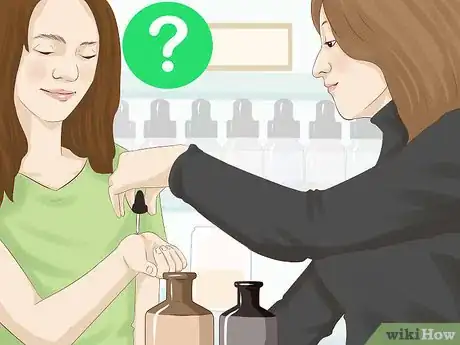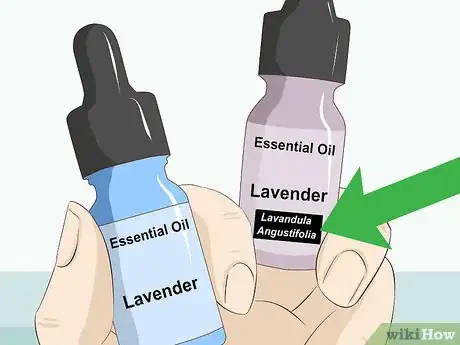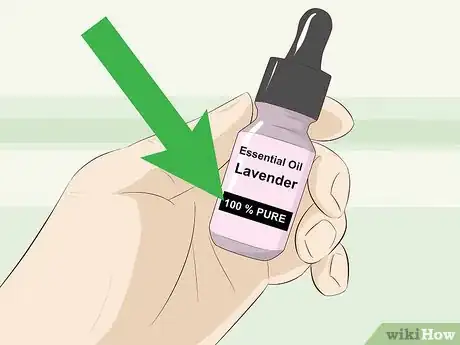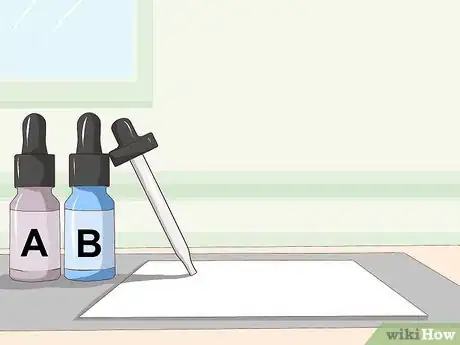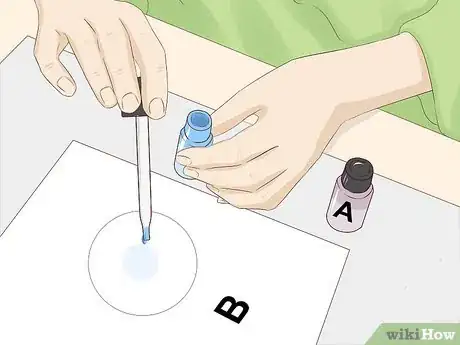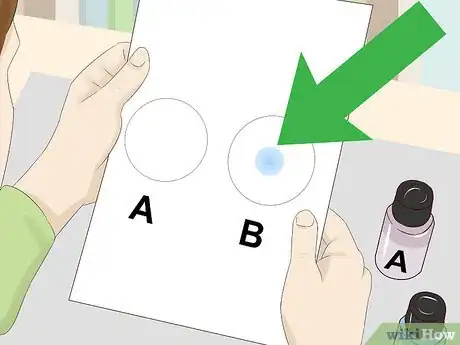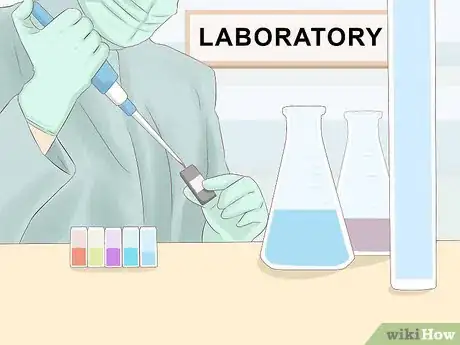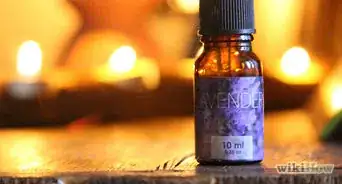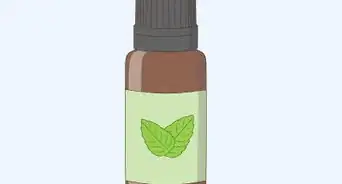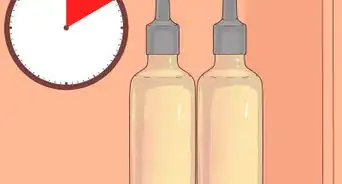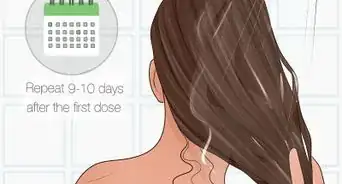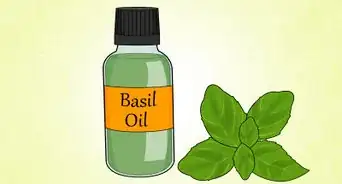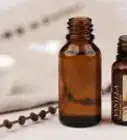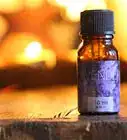This article was co-authored by wikiHow Staff. Our trained team of editors and researchers validate articles for accuracy and comprehensiveness. wikiHow's Content Management Team carefully monitors the work from our editorial staff to ensure that each article is backed by trusted research and meets our high quality standards.
This article has been viewed 60,285 times.
Learn more...
Essential oils are growing in popularity due to their pleasant scents and various household uses. However, the purity of the essential oil is important for making sure it is as effective as possible. To verify that your essential oils are high quality, it is important that you learn the signs of a good essential oil and test the oils out for yourself.
Things You Should Know
- To check the purity of an essential oil, place one drop of the oil on a piece of paper and wait 30-45 minutes.
- If you notice an oil or grease ring after the product dries, it could indicate an impure product.
- If you need precise—results like if you're using the oil for commercial purposes—send it to a lab for professional testing.
Steps
Checking Before You Buy
-
1Ask your supplier about the purity of their oils and the distilling process. Try to buy from a supplier who distills their own oils, or deals directly with a distiller who does. Suppliers should be willing to provide you with a sample (maybe for a small fee) before encouraging you to buy larger quantities. This shows that they are confident in their product and believe that if you try it you will buy.[1]
-
2Search for oil by the specific name of the plant it is derived from. Being able to read the label and identify the plant makeup of the oil is the first step to buying a quality oil. The general rule of thumb is to purchase by the Latin name, which can be found by searching online for the plant, as this is normally the most specific.[2]
- For example, many customers purchase lavandula oil, also known as lavender, because of its calming effects. A common mistake is purchasing lavender oil instead, which has the opposite effect and will make the user more alert.
Advertisement -
3Check the packaging for a purity statement. There should be a statement on the packaging of the oil that says “100% Pure” or something similar to this claim. If there is not, it has likely been mixed or adulterated with some other substance.[3]
Testing the Oils
-
1Select an oil to test and get a piece of blank paper. You can test your oil at home with just these 2 items. Make sure you cover your work surface with wax paper or tin foil to protect it from any oil that might bleed through the paper. [4]
-
2Place one drop of the oil on the paper. If your oil doesn’t have a dropper with it or a cap that allows this, you can use the eraser side of a pencil. Just dip the eraser into the bottle and let the oil drip onto the paper from there, or gently touch the eraser to the paper to get the oil to transfer.[5]
- If you’re testing multiple oils, it might help to label each one so you remember where it is on the paper.
-
3Allow the oil to dry completely. This will normally take about 30-45 minutes depending on how much oil you have on the paper. Check after 30 minutes, and if there’s still some liquid on the paper, allow another 15 minutes to dry.[6]
-
4Check the places where you dropped the oil for a leftover ring of oil or grease. If there is a ring present, that means that the oil has likely been diluted with another substance and is less pure. If you can’t see a ring, try touching the paper with your finger lightly. If it’s completely dry and you don’t feel any oil or grease on your finger, your oil is likely pure and high quality.[7]
- Some oils that are darker in color will leave a slight tint, but the paper should not be oily or greasy once completely dry. Oils such as sandalwood, patchouli, and German chamomile will leave a tint but not an oily ring.
-
5Send your oils to a lab for testing if you will be using them for professional reasons. For aromatherapists and naturopaths, it might be worthwhile to send oils to a lab for chemical testing. This will ensure that the chemical makeup of the oil is indeed pure and what is labelled on the bottle.[8]
- The two means of testing are Gas Chromatography and Mass Spectrometry. These tests are often performed together in a lab, and will show whether there are any “adulterants” in the oil.[9]
Warnings
- Essential oils should never be ingested unless you are under the care of a trained professional.⧼thumbs_response⧽
- If you are doing home testing on your oils, make sure you’re working in a space that is well-ventilated to prevent overwhelming or unpleasant scents.⧼thumbs_response⧽
- If you’re unsure about the quality of an essential oil, hold off on buying it until you are able to verify that it is pure.⧼thumbs_response⧽
References
- ↑ https://achs.edu/blog/2014/01/07/essential-oil-quality/
- ↑ https://achs.edu/blog/2014/01/07/essential-oil-quality/
- ↑ http://www.naturallivingideas.com/fake-essential-oils/
- ↑ http://www.naturallivingideas.com/fake-essential-oils/
- ↑ http://www.naturallivingideas.com/fake-essential-oils/
- ↑ http://www.naturallivingideas.com/fake-essential-oils/
- ↑ http://www.naturallivingideas.com/fake-essential-oils/
- ↑ https://wholenewmom.com/health-concerns/toxic-overload-health-concerns/essential-oils-testing-is-it-reliable/
- ↑ https://wholenewmom.com/health-concerns/toxic-overload-health-concerns/essential-oils-testing-is-it-reliable/
